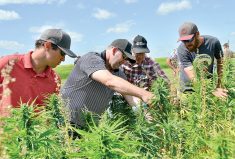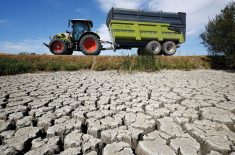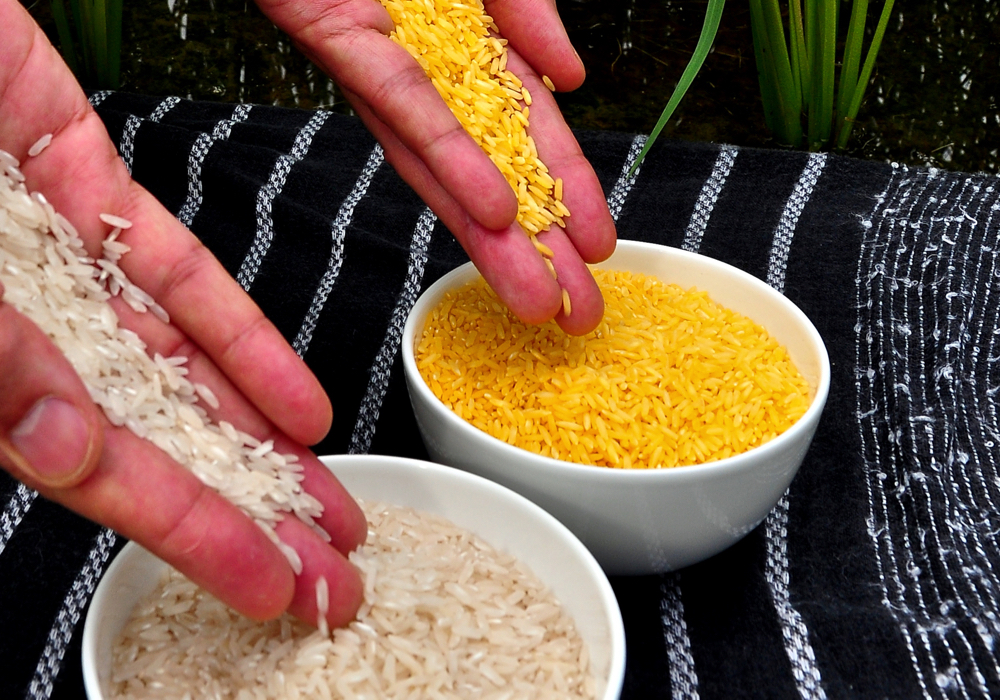After three years of producing maize using conservation agriculture, Nkasauka Nthala is a convert.
The yields from her tiny .16-hectare plot of maize grown using direct seeding instead of hoeing were 166 per cent above the yields of maize grown under conventional practices.
Yet only a small portion of the farm she shares with her husband and six children has been converted over to the new farming system.
At first, it’s hard to coax out of her why.

Chris Woodring, a consultant hired by the Canadian Foodgrains Bank with support of the Howard G. Buffett Foundation to interview smallholder farmers in five African countries, is a master by now at drawing out their reasons.
He teases. He cajoles. He tells stories from his own small-scale farm in Kentucky. He gently calls them out on their inconsistencies. When all else fails, he draws diagrams in the sand.
“I have been sent here so the small farmer’s voice can be heard,” Woodring tells them.
As all of this translates through the interpreters, the farmers smile and start to relax.
Sitting beneath the shade of the tobacco-drying shed on their land located on the Malawi-Zambian border three hours west of Mzuzu, Nthala and her neighbour Zione Mbewi start to open up.
Read Also

Manitoba boosts stake in cereals centre to $23.5 million
Premier Wab Kinew said the additional project funds will help ‘Trump-proof’ the provincial economy.
Hurdles
They tell us they can see that conservation agriculture is more productive, and they can see how their families can benefit. But converting the entire farm to the system is difficult for a number of reasons.
For starters, many farmers find it difficult to find enough of the mulch they use to cover the ground between the rows of maize, especially in the early years.
Finding it is one challenge. Preserving it is another.
During the dry season, farmers with livestock often allow their cattle to roam freely, looking for forage. Corn stover that’s been left on the field for ground cover tastes pretty good.
Crispy mice
The decaying crop residues are also attractive to mice, which in turn, attract snakes. It also attracts the “mice catchers” — children who set the field on fire so they can catch the rodents as they flee.
Their entrails removed, the critters are considered a delicacy after they are boiled and roasted until they are crispy. They are eaten skin and all.
Farmers here are farming on traditional communal lands so their ability to limit access is limited. So much for the ground cover, and without oxen and a cart, it’s difficult to bring it in from somewhere else, if they can even find it.
The ‘man problem’
But perhaps what one farmer described as the “man problem” is the most difficult conundrum of all.
“It is customary here that the husbands are in control of the land, so they are the ones who share a portion for them to practise CA,” our interpreter explained. “Most of them are not interested, because they are not seeing instant benefits, so they just give small portions to their wives, because it is mostly the wives who have adopted the technology.”
Mbewi said she had hoped to expand her CA plot to include soybeans and groundnuts but her husband wouldn’t give her the land. Now that he has seen how her small plot has performed under CA after it has been enriched with mulch and manure, he wants to take it over and plant tobacco, the country’s biggest export crop.
“In Malawi, food production is done by women, and so you find that food becomes a gender issue. Men would prefer to grow a cash crop where women would like to look after their families. So hunger becomes the main issue for the women,” said Sain Mskambo, a project officer with the NGO Find Your Feet, based in Mzuzu.
The tobacco industry turned to contracting with smallholder farmers in the early 2000s after commercial tobacco-producing companies went bankrupt.
Farmers are provided with seed, fertilizer and advance cash payments to tide them over until their crop can be sold. Local extension workers say farmers often don’t get enough from their crop to pay those loans back. But they also say that when prices are good, businesses and the booze halls in the region do a booming business when the tobacco is sold in May.
Cellphones, televisions, and new clothes don’t do much for food security, as many of these families still struggle to find enough food to eat during the lean months between when the old maize crop runs out and the new one comes in.
But they do bring with them a certain status. Hunger is less visible.
Up until recently, researchers and NGOs focused on building food security have been the ones championing conservation agriculture. They are less interested in providing support for cash crops, especially tobacco.
“I think that in truth, that if you can improve the income of a household, then you will improve their food security,” Woodring said. “But in many cases the organizations don’t see it that way — they design projects which are maize focused.”
For the sake of the land and the families living off it, Woodring says that may have to change. “Currently here in Malawi, a huge percentage of farmers are working with tobacco so I think we are blind… if we do not work with them,” Woodring said.
“If we say, ‘should we be working with the tobacco industry?’ I think we are asking the wrong question,” he said.
Co-operator editor Laura Rance is visiting three African countries in February and March on secondment to the Canadian Foodgrains Bank.
















